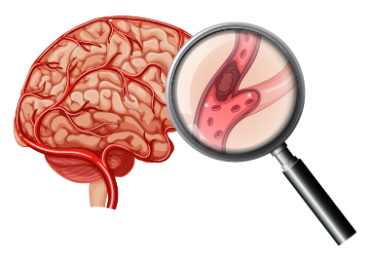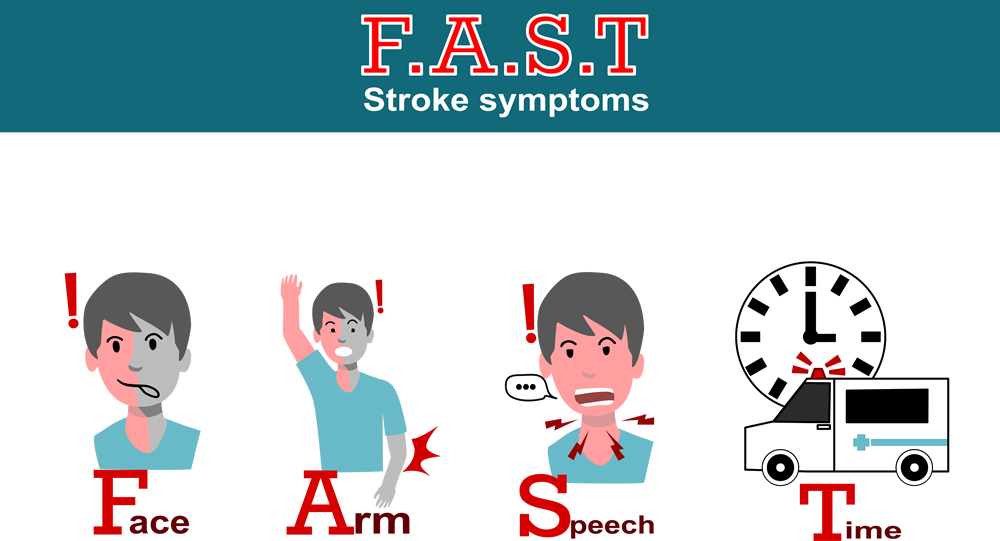Acute Ischemic Stroke is a type of stroke that happens when the blood supply to an area of your brain is interrupted. Brain function is very dependent on a continuous blood flow to provide oxygen and essential nutrients. If blood flow is interrupted, sections of the brain fed by that vessel begin to cease functioning and if enough time elapses without blood flow, the brain can be permanently damaged.

Figure 1. Ischemic Stroke
Stroke is the most common cause of long-term and preventable disability in the United States. Every 40 seconds, someone in the United States has a stroke. Every four minutes, someone dies of a stroke. Every year, 795,000 people in the United States have a stroke. Ischemic strokes account for about 87% of all strokes.
If you or someone you know is experiencing stroke symptoms, seek immediate medical help and call 9-1-1!
People who have a stroke might experience a variety of symptoms, which can vary considerably from one region of the brain to another. People who have had a stroke may suffer from slurred speech, numbness, limb weakness or paralysis, vision difficulties, agitation, and even coma.
“FAST” is an acronym for “Face, Arms, Speech, Time,” which was created to assist people remember the symptoms of a stroke.
Any of these characteristics, no matter how minor or fleeting, should be treated as an emergency and contacted 9-1-1!
Face: Ask the individual to smile on one side of his or her face. Is one side of the face drooping or numb? Is there an unevenness in the grin?
Arms: Ask the individual to raise both arms. Is it possible that one arm can’t be raised up or does one arm fall down?
Speech: Ask the individual to repeat a basic phrase such as “The sky is blue.” Is their response slurred, or is it unusual?
Time: If you notice any of the following symptoms, regardless of whether they go away, immediately call 911 because treatment success depends on time. Keep track of the time so you can identify when the symptoms began.

Figure 2. F.A.S.T
The immediate restoration of blood flow to the brain region affected by a blood flow blockage is critical for saving brain tissue and restoring normal function. Brain cells can only survive a few hours without blood flow. Doctors may restore brain flow during a stroke by several strategies:
Emergency IV medication: Clot-breaking drugs can reopen blocked vessels but must be given within 4.5 hours or less from the onset of symptoms. The gold standard treatment for ischemic stroke is recombinant tissue plasminogen activator (tPA) — also known as alteplase (Activase) given into the veins through an IV. The earlier the medication is started the better the results achieved.
Emergency endovascular procedures: In certain circumstances, doctors may manage ischemic strokes by directly opening the vessel that has been blocked with catheters and devices inside the blocked vessel.
- Mechanical Thrombectomy: A procedure performed from inside the vessels with the goal of physically removing the clot blocking the vessel with devices such as stent retrievers or aspiration catheters.
- Intra-arterial Thrombolysis: Direct administration of clot breaking drugs into the clot or the blocked vessel
Please see the treatments section for further information on acute ischemic stroke therapies.
